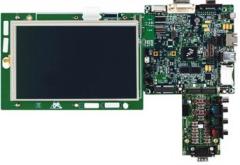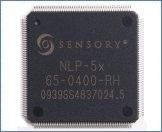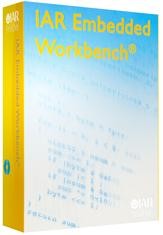LATEST NEWS FROM INDUSTRY EVENTS-2010
because information matters Tutorials | Infoletters | News | Search
Logos and brand names used in this site are belonging to their respected owners. We have used them here only for the purpose of information. Enable Active X control from internet options of internet explorer to view all element of this site.
Best viewed in 1024x768 pixels
RSS FEED
Sensory, Inc., today announced the release of the NLP-5x speech chip, ushering in a new era of natural language and hands-free interfaces for low-cost consumer products. Sensory's New NLP-5x chip is the first low-cost speech chip to offer a natural language interface. Sensory introduced the RSC series processors, widely considered to be the first viable speech recognition chips, in 1995. These chips perform simple command and control speech recognition and speech playback on an 8-bit microcontroller. To date, Sensory's speech chip families have sold more than 60 million units. The move from the RSC line of processor to the NLP-5x represents roughly a 5-fold increase in MIPS and RAM over the company's previous generation and is crucial for the new features and technologies of the NLP-5x.
IAR Systems introduced version 5.41 of the IAR Embedded Workbench for ARM. The latest version is highly optimized for code size and increased execution speed. The IAR Embedded Workbench version 5.41 performs up to 13% better on CoreMark benchmarks for Cortex-M0 compared to the previous version of IAR Embedded Workbench. IAR Embedded Workbench is compatible with other ARM EABI compliant compilers and over twelve ARM cores.
The IAR Embedded Workbench version 5.41 supports code generation and debugging of ARM Cortex-R4F core with the vector floating point (VFP) coprocessor extension. Devices with a VFP unit will benefit from the compiler’s VFP support, making floating point operations written in C/C++ run in fewer clock cycles, and further improving the performance of the compiled code.
Oki semiconductor is delivering high profile fingerprint ic with ARM7TDMI core. MK67Q5250 is specific LSI for the fingerprint authentication system equipped with the fingerprint authentication accelerator. An external memory is not needed, and the fingerprint authentication system that achieves high speed, high accuracy, and low power consumption can be achieved low-cost and easily.
Freescale is providing i.MX51 Evaluation kit. This kit comes with two add-on modules
a)LCD
b)expansion board
i.MX51 is based on Cortex-A8 core. This processor is used in energy efficient devices. Freescale provide Board Support Packages (BSP) for Linux and Windows Embedded CE. A range of connectivity options makes the i.MX51 EVK suitable for developing many different types of user applications.


The NLP-5x is designed to offer advanced speech recognition, text-to-speech (TTS), high quality music and speech synthesis and robotic control to cost-sensitive high volume products. Based on a 16-bit DSP, the NLP-5x integrates digital and analog processing blocks and a wide variety of communication interfaces into a single chip solution minimizing the
need for external components.
All chip programming is done under the ZVIEW IDE (Integrated Development Environment), and requires the FluentChip™ 5 Libraries and QuickSynthesis™ 5 tools. Please note that ZVIEW's IDE, C Compiler, JTAG debugger, and Sensory's Quick T2SI™ software are not free and must be licensed separately.

Other new features of IAR Embedded Workbench 5.41 include the ability to set start and stop trace triggers. In addition, the instruction trace triggers can be started and stopped based on conditions such as specific code locations and data access. This feature is supported both by J-Trace for ARM and J-Trace for Cortex-M3 trace probes. In addition, the J-Trace for Cortex-M3 supports the use of the serial wire output (SWO) port trace.


